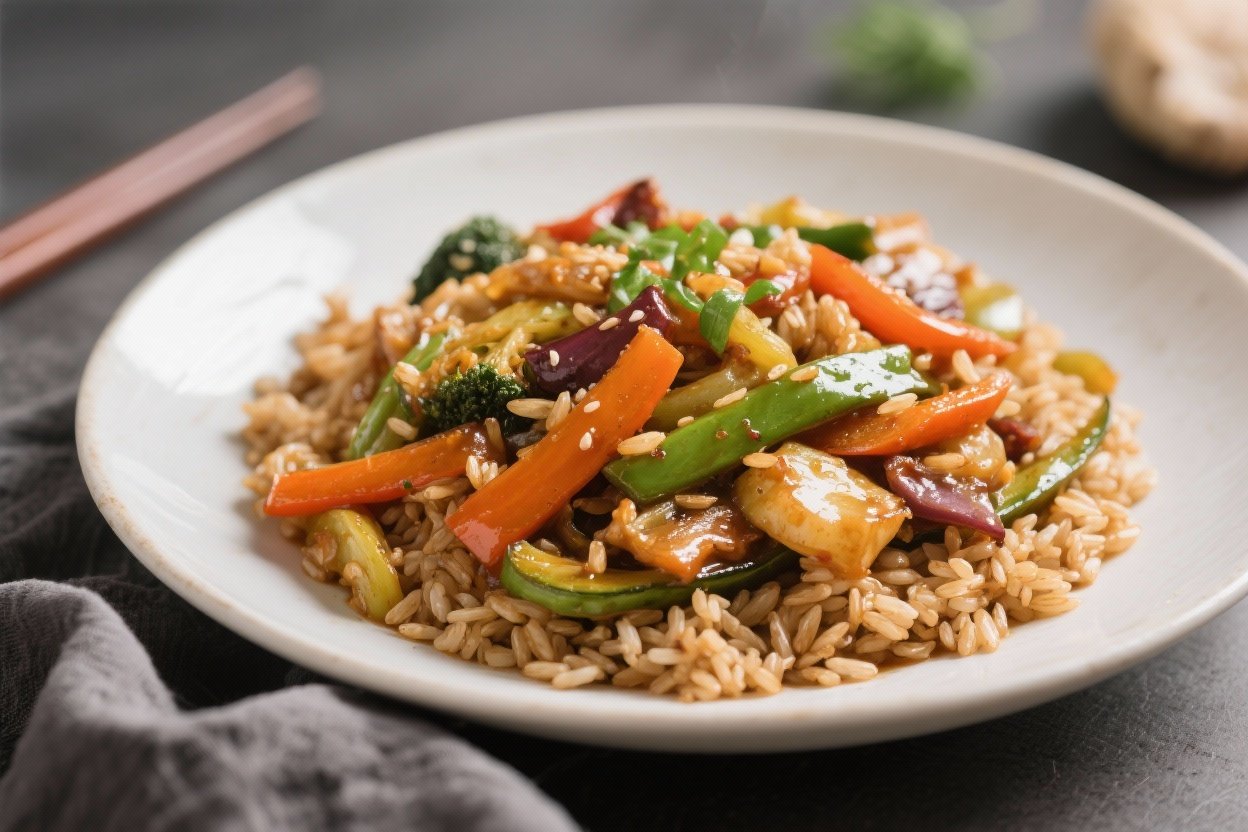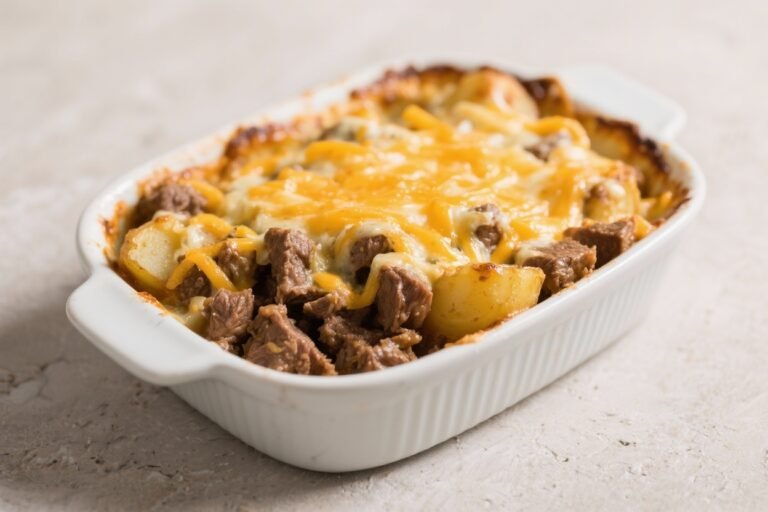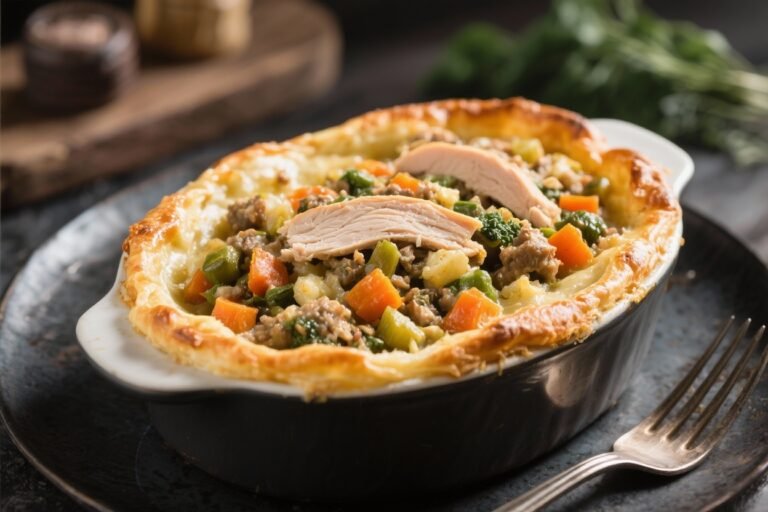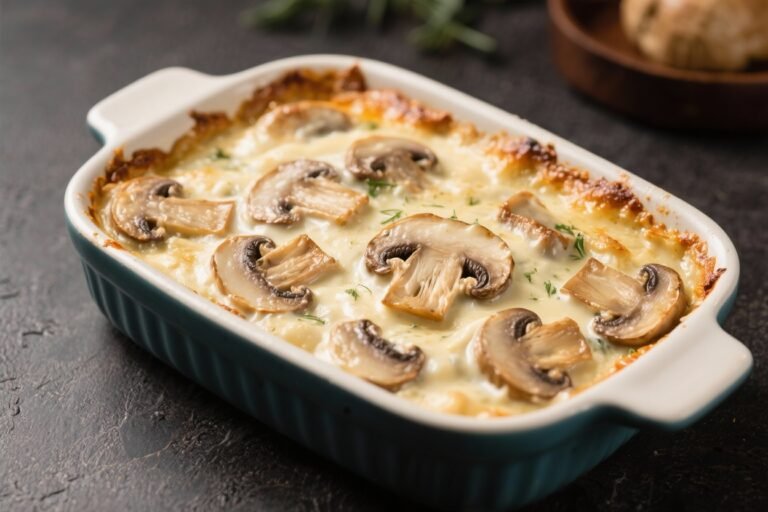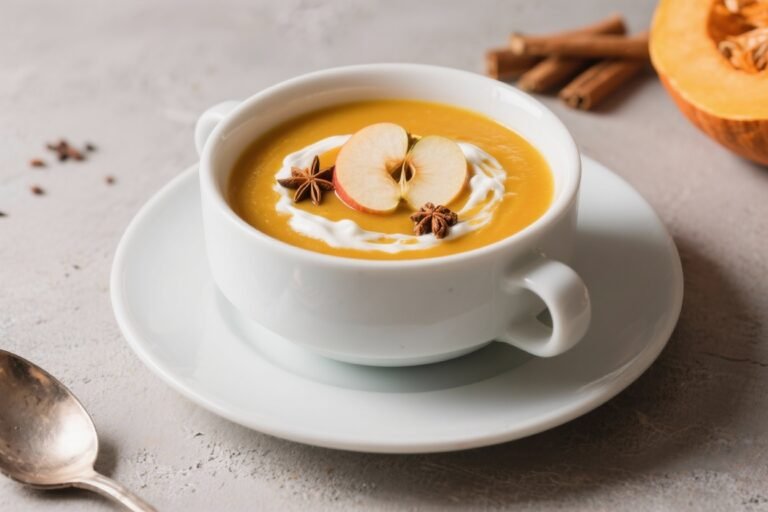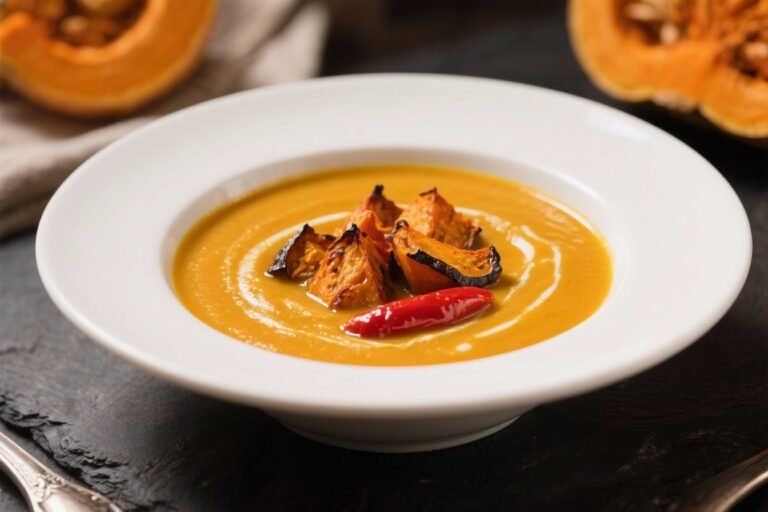High-Fiber Veggie Stir-Fry with Brown Rice: The 15-Minute Power Bowl Your Gut Will Thank You For
You want a meal that hits hard, tastes amazing, and doesn’t leave you hunting for snacks an hour later? This is that move. We’re talking crispy-tender veggies, glossy sauce, and nutty brown rice—loaded with fiber so you’re full, energized, and borderline smug about your life choices.
No boutique ingredients, no fussy steps, just a pan, some heat, and a plan. Cook it once, crush your day. Simple.
What Makes This Special
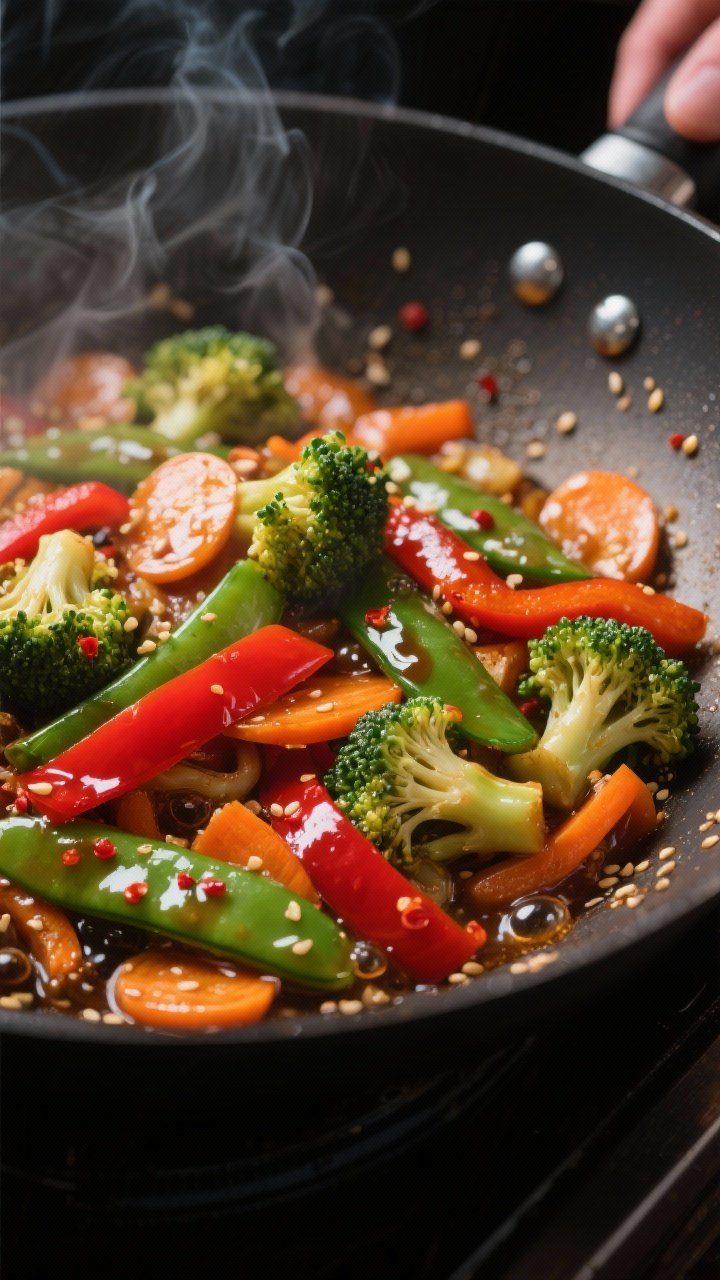
This stir-fry is engineered for real life: quick, colorful, and nutritionally dense.
The combo of brown rice + fiber-rich veggies + lean protein keeps blood sugar steady and energy high. It’s flexible too—clean-your-fridge friendly and adaptable to any diet. The sauce is balanced: savory umami, a hint of sweetness, and enough acidity to brighten everything up.
Think takeout-level flavor without the mystery oil slick.
What You’ll Need (Ingredients)
- Cooked brown rice: 3 cups (day-old is best for texture)
- Broccoli florets: 2 cups
- Bell pepper: 1 large, sliced (any color)
- Carrots: 2 medium, thinly sliced
- Snap peas or snow peas: 1 cup
- Red cabbage: 1 cup, thinly sliced
- Baby spinach or kale: 2 cups, loosely packed
- Red onion or scallions: 1/2 cup, sliced
- Garlic: 3 cloves, minced
- Fresh ginger: 1 tablespoon, minced
- Toasted sesame oil: 1 tablespoon
- Avocado or olive oil: 1–2 tablespoons for stir-frying
- Low-sodium soy sauce or tamari: 3 tablespoons
- Rice vinegar or lime juice: 1 tablespoon
- Maple syrup or honey: 1–2 teaspoons
- Cornstarch: 1 teaspoon (optional, for thicker sauce)
- Red pepper flakes or sriracha: to taste
- Toasted sesame seeds: 1 tablespoon
- Optional protein: 1 block firm tofu (pressed and cubed), 8 oz tempeh, or 8–12 oz shrimp/chicken
- Optional add-ins: edamame, mushrooms, zucchini, bean sprouts, cilantro
Instructions
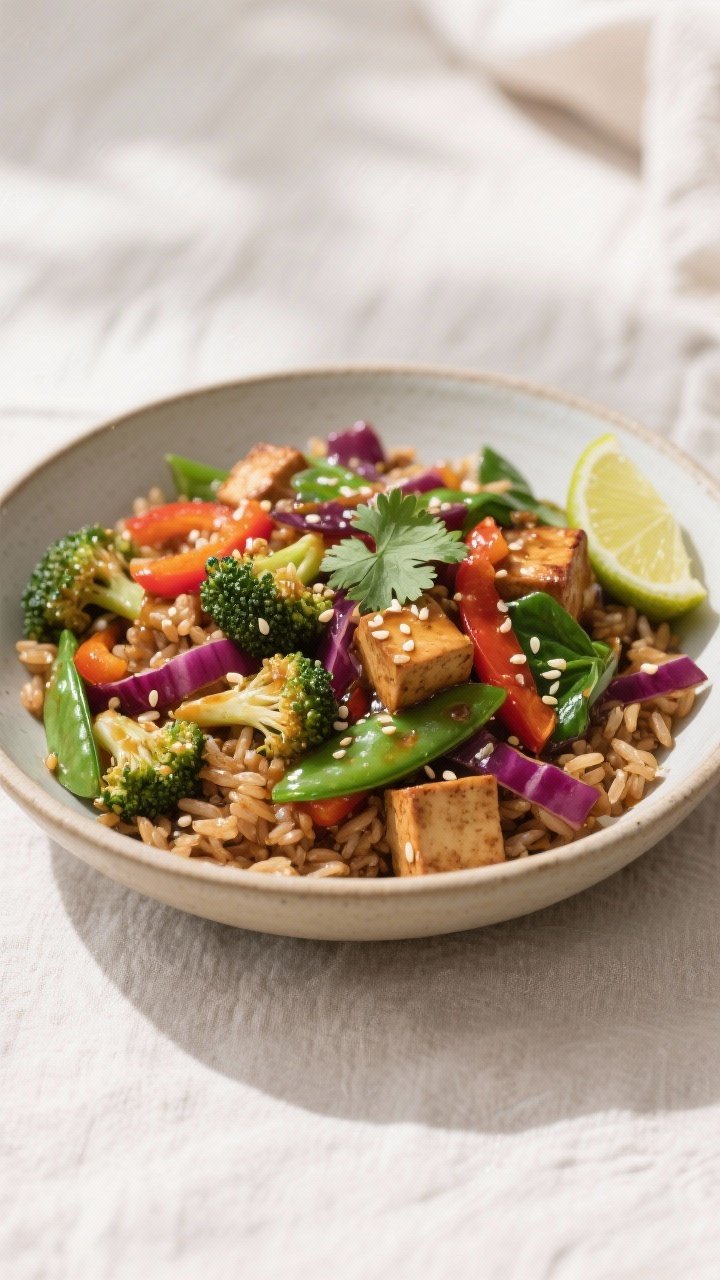
- Prep the rice: If you don’t have day-old rice, cook 1 cup dry brown rice according to package directions and spread it on a tray to cool. Cooler rice fries better and clumps less—big difference.
- Mix the sauce: In a small bowl, whisk soy/tamari, rice vinegar, maple syrup, sesame oil, and a splash of water. If you like a thicker glaze, whisk in cornstarch until smooth.
Set aside like a pro.
- Heat the pan: Use a large wok or heavy skillet. Add 1 tablespoon oil over medium-high heat until shimmering. High heat = crisp veggies, not sad mush.
- Protein first (if using): Stir-fry tofu/tempeh/shrimp/chicken with a pinch of salt until browned and cooked through.
Remove to a plate.
- Aromatics: Add a touch more oil. Toss in garlic, ginger, and onion/scallions for 30–45 seconds until fragrant. Don’t let them burn; burnt garlic is a vibe killer.
- Hard veggies: Add broccoli and carrots.
Stir-fry 2–3 minutes. Sprinkle a tablespoon of water to steam if needed.
- Medium veggies: Add bell pepper, peas, and cabbage. Stir-fry 2–3 minutes until bright and crisp-tender.
- Greens last: Add spinach or kale, tossing until just wilted.
Overcooking here = soggy sadness.
- Sauce it up: Return protein to the pan. Pour in the sauce and toss for 1–2 minutes until glossy. Add red pepper flakes or sriracha to taste.
- Rice finale: Add the cooked brown rice.
Stir-fry 1–2 minutes to heat through and coat with sauce. Taste and adjust soy, acid, or heat as needed.
- Finish: Sprinkle sesame seeds. Optional squeeze of lime, and a handful of chopped cilantro if you’re feeling fancy.
How to Store
- Fridge: Store in airtight containers for up to 4 days.
Let it cool before sealing to avoid condensation sogginess.
- Freezer: Portion into freezer-safe containers for up to 2 months. Thaw overnight for best texture.
- Reheat: Skillet over medium with a splash of water to revive. Microwave works in a pinch—cover to keep moisture.
- Meal prep tip: Keep sauce separate if you plan to store more than 3 days; stir in fresh for peak flavor.
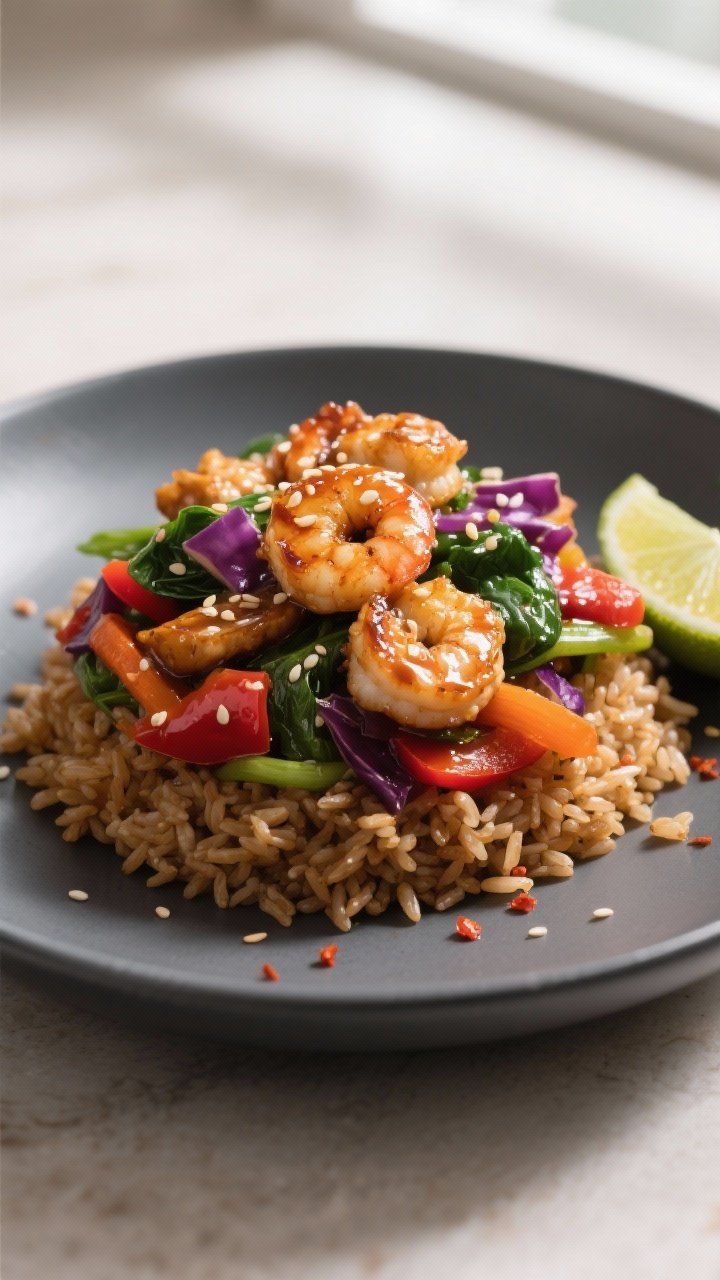
Benefits of This Recipe
- High fiber, low drama: Brown rice, broccoli, cabbage, peas, and greens stack up 10–14g fiber per serving depending on portions.
That’s satiety, better digestion, and happier gut microbes.
- Balanced macros: Complex carbs, plant or lean protein, and healthy fats. Stable energy, fewer cravings. No afternoon slump, IMO.
- Micronutrient powerhouse: Vitamin C, K, folate, potassium, and antioxidants from the veggie rainbow.
Your cells are applauding.
- Customizable for any diet: Vegan? Use tofu. Gluten-free?
Tamari. Low-sodium? Swap coconut aminos and up the citrus.
- Budget-friendly: Uses staple veggies and pantry sauces.
Leftovers are elite.
Don’t Make These Errors
- Overcrowding the pan: Too many veggies = steaming, not stir-frying. Work in batches if needed. Space equals crisp.
- Skipping high heat: Lukewarm pan means limp results.
Preheat properly.
- Wet rice: Freshly cooked, hot rice turns gluey. Cool it or use day-old. FYI, a quick chill in the freezer for 10 minutes helps.
- Forgetting acid: The splash of vinegar or lime wakes up the whole dish.
Don’t skip the finale.
- Burning aromatics: Garlic and ginger go fast—add oil and stir constantly. If they brown too quickly, pull the pan off heat for a beat.
Alternatives
- Rice swaps: Quinoa, farro, or cauliflower rice for lower carbs. Wild rice adds chew and extra minerals.
- Sauce variations: Add miso for depth, orange juice for citrusy sweetness, or peanut butter for a satay vibe.
Hoisin if you want richer umami.
- Protein spins: Crispy chickpeas, seared salmon, or leftover rotisserie chicken. Tempeh for extra fiber and protein.
- Veggie rotations: Bok choy, mushrooms, asparagus, or Brussels sprouts. Seasonal produce keeps it fresh and fun.
- Spice levels: Gochujang for heat and body, chili crisp for texture, or black pepper for subtle warmth.
FAQ
How do I get restaurant-style crisp veggies at home?
Use high heat, a large pan, dry veggies, and cook in batches.
Add harder veggies first, soft ones last. Keep them moving and don’t overcook—2–5 minutes is usually enough.
Can I make this oil-free?
Yes. Use a nonstick pan and veggie broth to sauté.
Finish with a tiny drizzle of toasted sesame oil for flavor if you’re flexible, or omit entirely and increase acid for brightness.
What’s the best way to press tofu?
Wrap in a clean towel, place a heavy pan on top, and press for 15–20 minutes. Or use a tofu press. Drier tofu browns better and soaks up sauce like a champ.
Is brown rice really better than white rice?
For fiber and micronutrients, yes.
Brown rice has the bran and germ intact, which supports digestion and steadier energy. If you prefer white rice for texture, you can still hit fiber targets with extra veggies and legumes.
Can I pack this for lunch without it getting soggy?
Absolutely. Keep sauce on the thicker side (use cornstarch), pack greens separately if you want max crunch, and reheat gently.
A sprinkle of fresh sesame seeds before eating adds texture back.
How spicy is this?
Base recipe is mild. Heat is adjustable—add chili flakes, sriracha, or gochujang to taste. Start small; you can always add more, but you can’t un-cry your eyes.
What if I only have frozen veggies?
Totally fine.
Cook from frozen on high heat, don’t crowd the pan, and expect a little extra moisture. Finish with a minute of high-heat stir-fry to evaporate excess liquid.
Final Thoughts
This High-Fiber Veggie Stir-Fry with Brown Rice is the weekday weapon: fast, filling, and ridiculously flexible. It checks the boxes—taste, texture, nutrition—without chewing up your time or budget.
Make it once and you’ll keep it in your rotation because it just works. Your gut’s happy, your brain’s focused, and your taste buds aren’t bored—win, win, win.
Printable Recipe Card
Want just the essential recipe details without scrolling through the article? Get our printable recipe card with just the ingredients and instructions.
